The Slate EV truck
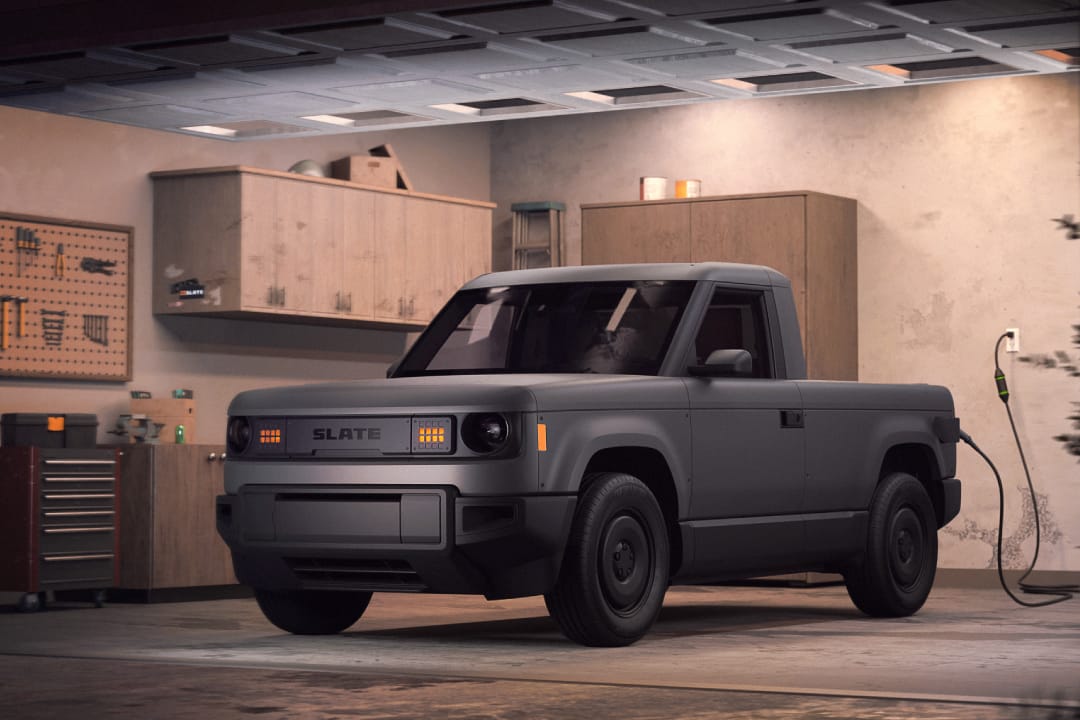
A bunch of friends sent me the announcement of the new Slate EV truck yesterday, asking what I thought. I was already looking forward to the Telo Truck, but the Slate looks even better and frankly, it's frighteningly close to my dream EV platform.
What would an ideal new EV product look like?
I've had a blog post about my dream version of an EV company circling in my brain for the past year but I never got around to finishing it. Basically my dream EV brand would make a product that hit these goals:
- Create a reference platform by selling one or two sizes/lengths of a "battery skateboard" starting around $20k that anyone could bolt any kind of body to.
- Sell various body configurations so people could bolt a sports car coupe body, a four door family sedan, a SUV, or a truck to it, for maybe $5k-$10k more.
- Publish open licensed, detailed CAD files of the battery skateboard so any other company could create a different "car" to go on top.
The EV market is being held back by costs of new EVs.
EVs are cheaper to produce and use, but that's not reflected in the prices of new EVs, as most companies produce luxurious, fast EVs. They need to be cheaper because they frankly can't do everything a gas car can, but as an "extra" car in your household, they should have prices that reflect that kind of secondary transportation. $20k is a great reasonable amount that feels "cheap" for a new or even used car (the average new car price in the US is currently $48k).
EVs are easier to scale up as a platform versus a combustion car.
Most car companies today make one generic EV platform that is used on many different models and configurations. Chevy's current EV platform is used for the Blazer EV and the Equinox EV, plus the Honda Prologue and the Acura ZDX. VW's auto group makes one EV platform that serves the ID4 sedan and the ID Buzz VW bus model, as well as some Audi e-tron models.
You slap four wheels, a basic suspension, and a bunch of batteries along with a motor on the bottom of a skateboard and you bolt any kind of body on top.
I love the idea of a reference platform much like the VW Beetle of the 1950s-1970s.
The VW bug was a car that didn't change much for decades, and its parts were shared with other VW models of that era. People made crazy versions for the beach, and for camping and for racing and for running errands. Every part for it was cheap and interchangeable, letting people change them for how they wanted to use them. EVs could follow a similar plan.
Everything Slate got right
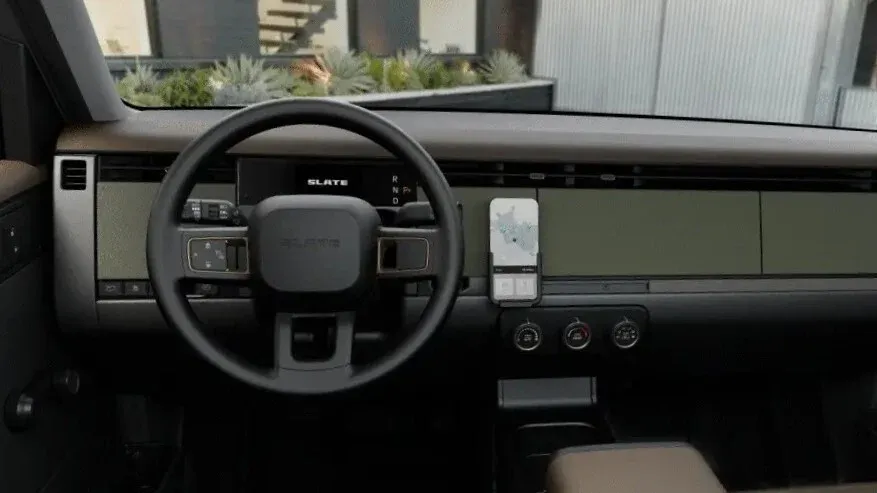
I love the Slate and almost everything about it. I love the low cost, I love the customization possibilities, and I love that they didn't try to make another overpriced luxury EV.
Small trucks are the way to go.
I love small trucks, my first two cars were both mini pickups from the 1980s and I love seeing imported Japanese kei trucks around Portland. I currently own a Ford Maverick that I enjoy driving, but I'd be happy going even smaller. The Slate is the perfect truck size.
>99% of car trips I've ever taken are 100 miles or less.
I love that Slate only shot for a 150mi max battery platform. That covers every use of a small car outside of a long road trip. I had a BMW i3 EV for a couple years, with a 75mi max battery and it was a fantastic city car for getting around the Portland metro area. Seriously a 100mi EV can be small and cheaper and cover almost all your typical driving.
Every car company is focused on making 300 mile range EVs as gas car replacements because that's what most cars get on a full tank of gas, but that means they must be large, heavy, and expensive to pay for all those batteries. People should instead think about an EV as a vehicle for most normal city trips while saving rare long road trips for a rented gas car (or a gas car you keep as a backup).
I love that they shot for such a low price.
EVs offer a bunch of advantages for the companies making them, but few EVs sold in America pass those savings along. Instead we get a lot of super fast, super luxurious EVs with costs that creep up towards (and even beyond) $100k. Public support for EVs won't happen en masse until it's a cheaper, easier, and frankly a better option than buying an entry level combustion car. $20k as a starting price totally nails that.
I love the barebones interior.
The Ford Maverick tried to be a $20k entry level small pickup a few years back and even though most cost around $30k today, one thing I love about the Maverick is that entertainment system offloads almost everything to your phone. It feels like the first truck designed for an iPhone or Android natively, with zero navigation built in (because who even uses the stock navigation when our phones give us up-to-the-minute traffic info?).
When I buy old used cars for projects, I specifically look for bare-bones stripped models because they're easier to work on, easier to upgrade, and have less things that can go wrong. I adore the roll up windows and blank dashboard of the Slate truck. A blank dashboard is exactly where I'd install a 10"-12" CarPlay stereo or iPad screen and I'm happy to know I wouldn't have to strip out (or pay for) a stock stereo I wasn't going to use anyway.
Their suite of customization options is completely and totally my jam.
I already do this with every car I've owned, but them producing something from the factory that is ready to tweak how the owners want to use them is an ideal scenario. Kudos, Slate design team, you nailed this one.
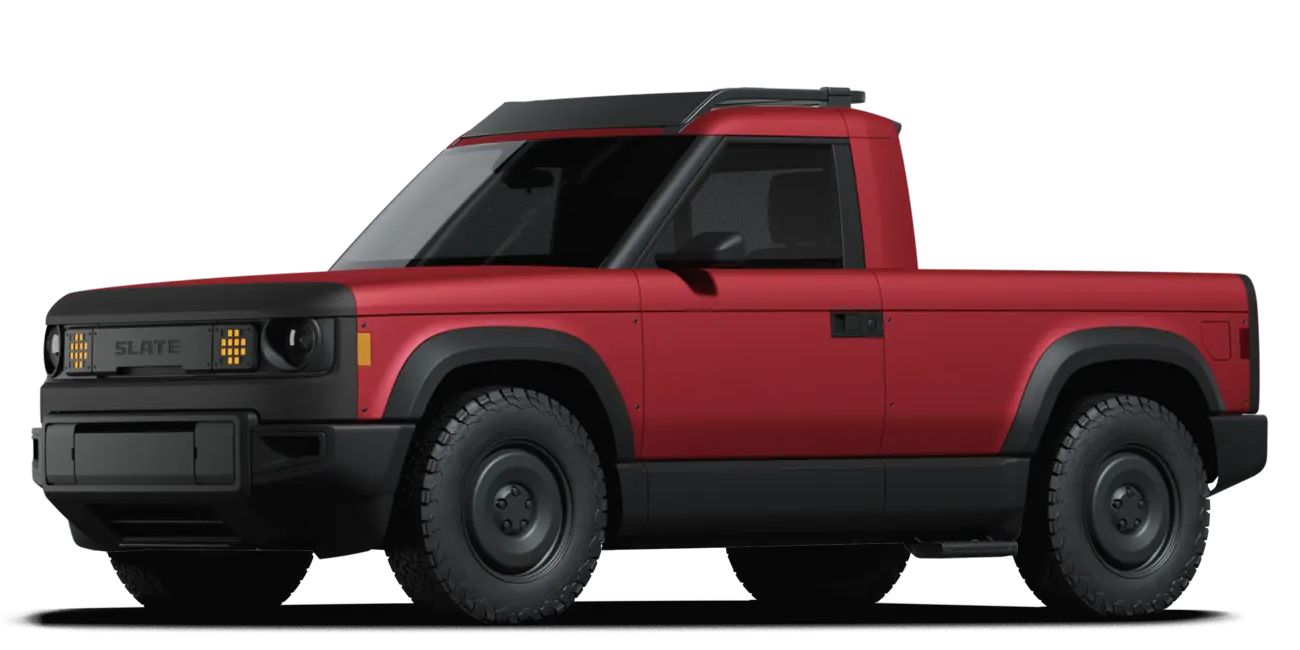
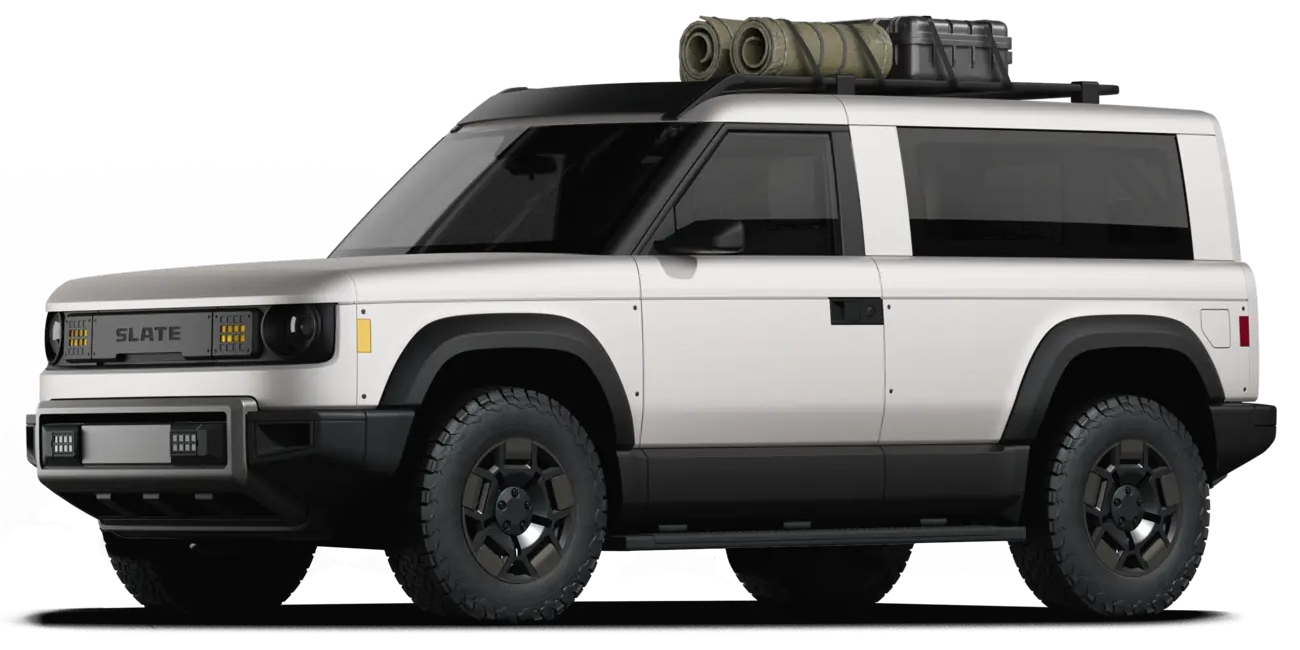
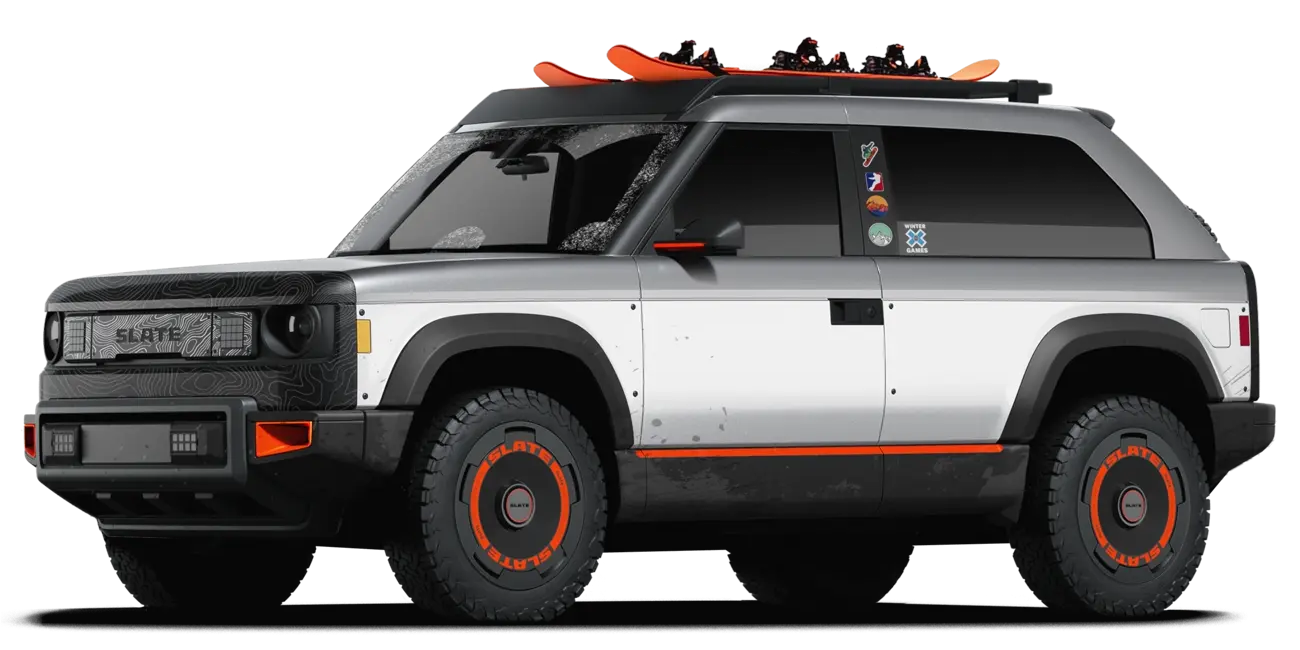
Honestly I would take any of these configurations above and enjoy the heck out of them.
My only hope is that Slate can figure out a way to really produce this simple stripped down platform at the prices they set, but also figure out a way to make it profitable as a company without saddling owners with monthly subscriptions or too much upselling.
I'll be following them closely and if they can put this out around the prices they promised in just a couple years, I think they'll have a huge hit on their hands.
UPDATE: I placed a $50 pre-order for one and hope to see them in June when the company swings through Portland on a demo tour. Here's my aqua and bronze SUV version I made on their customizer:
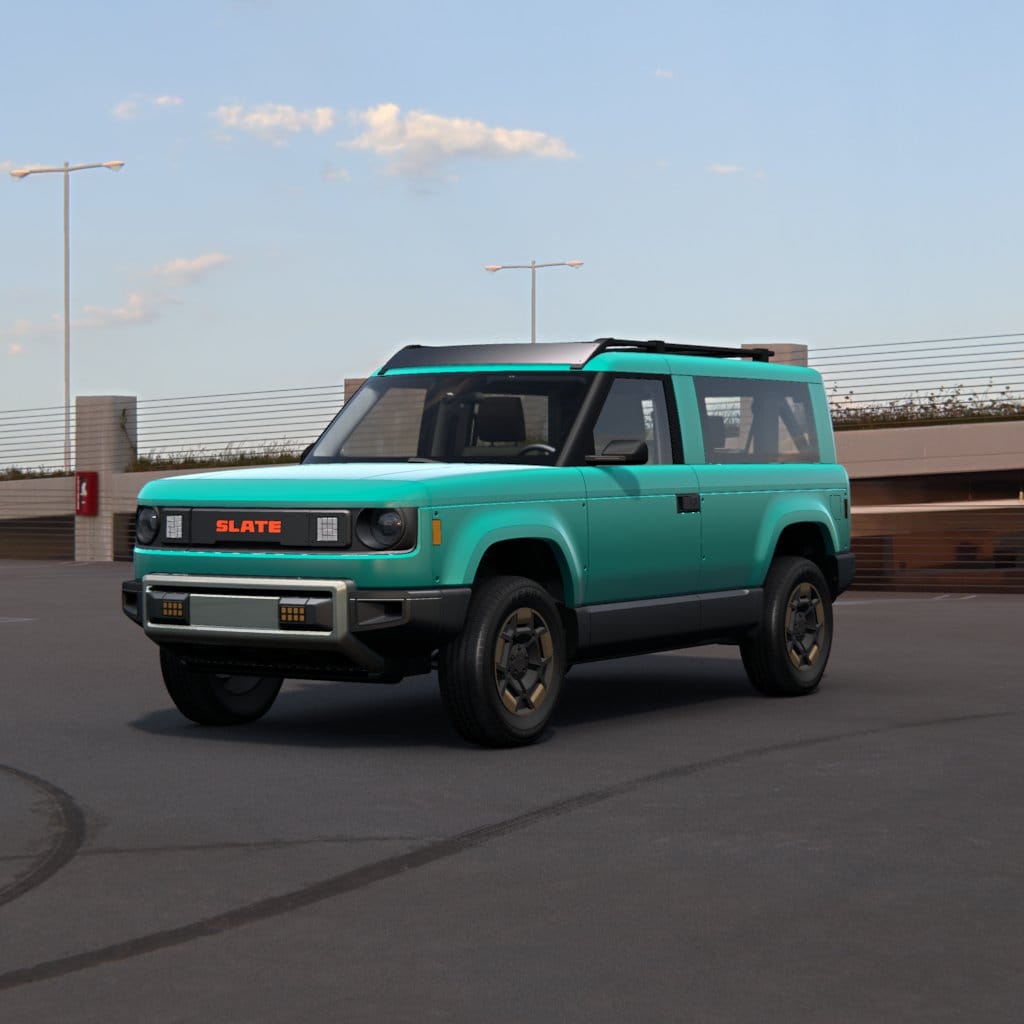
Subscribe to get new posts in your inbox

